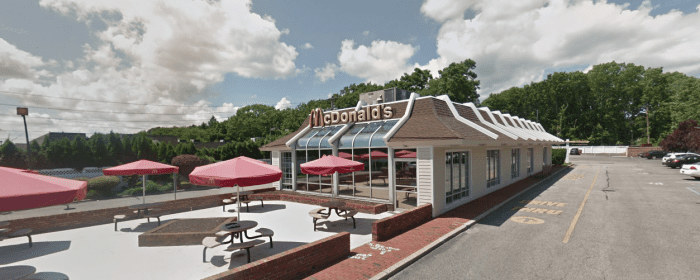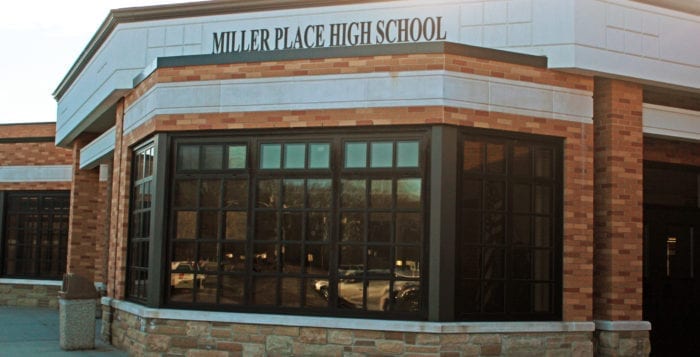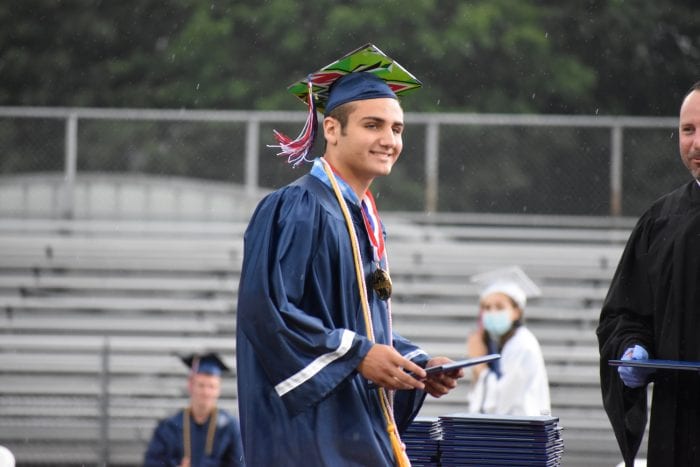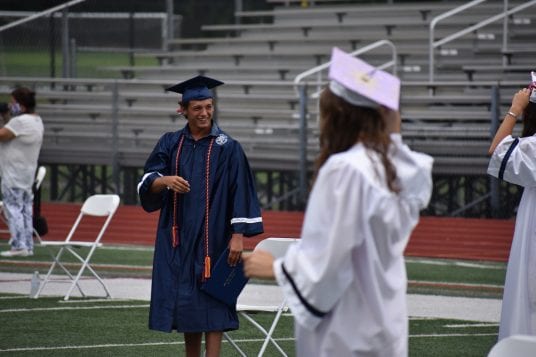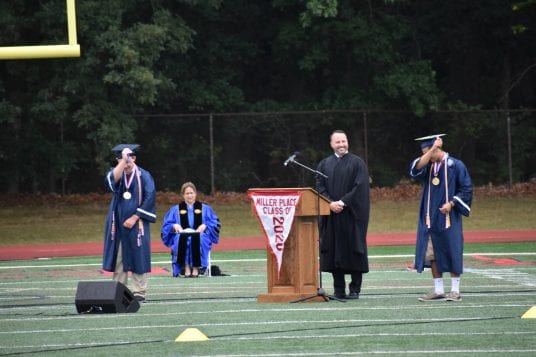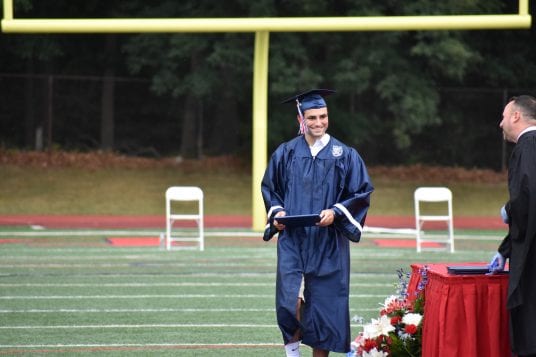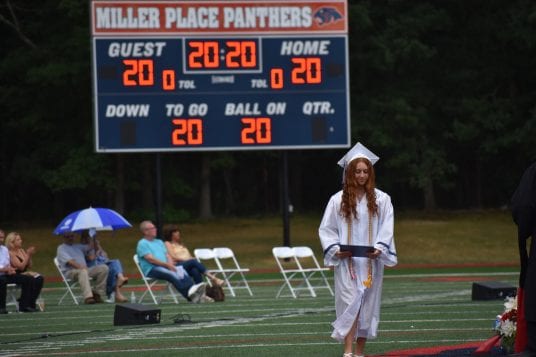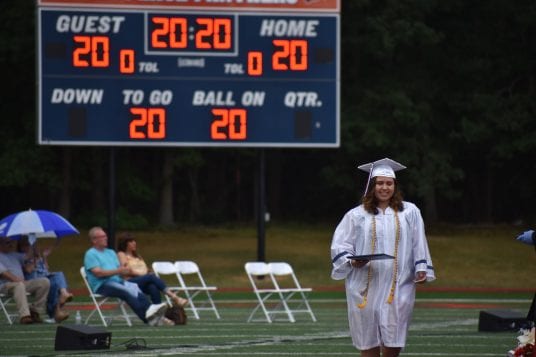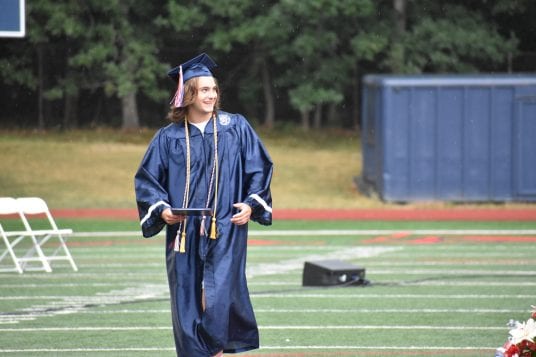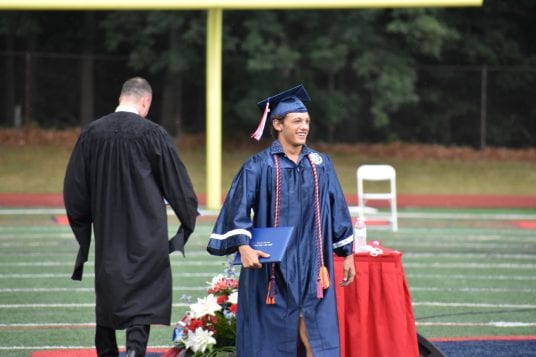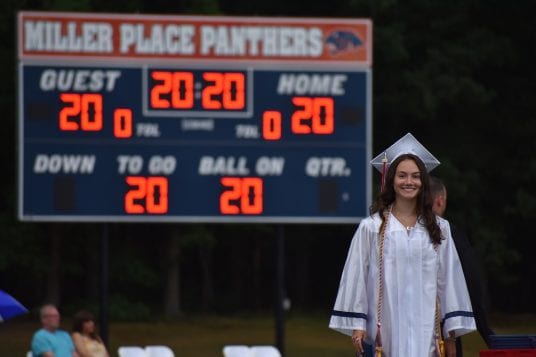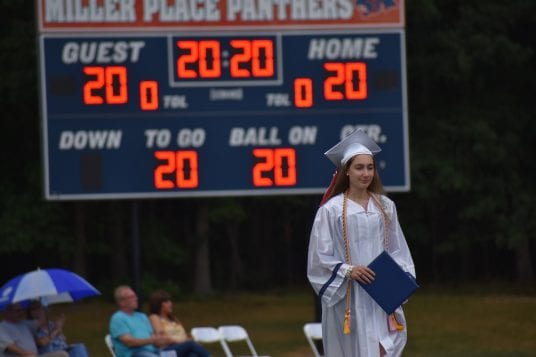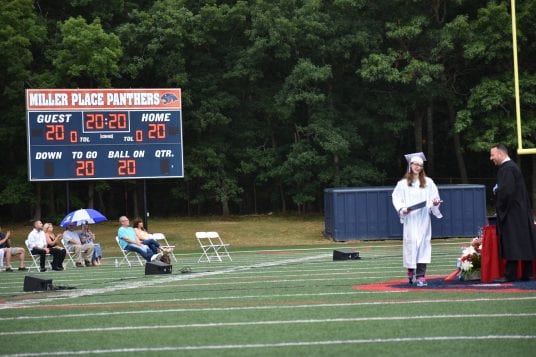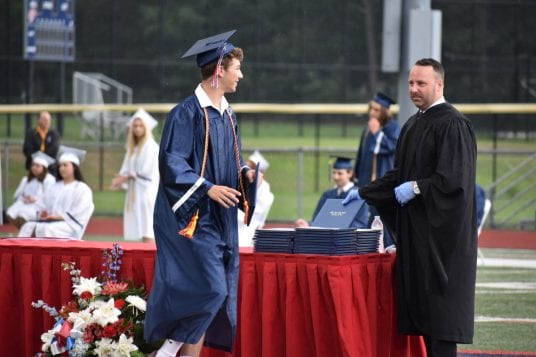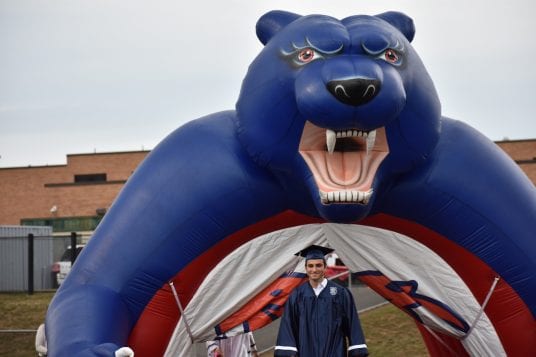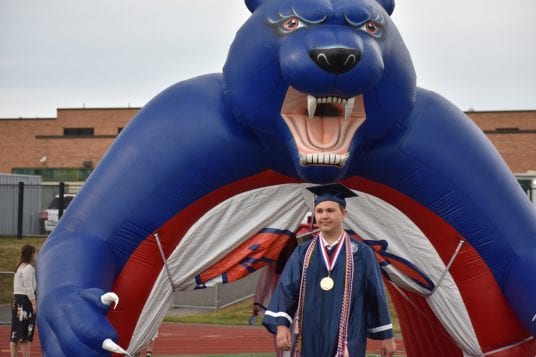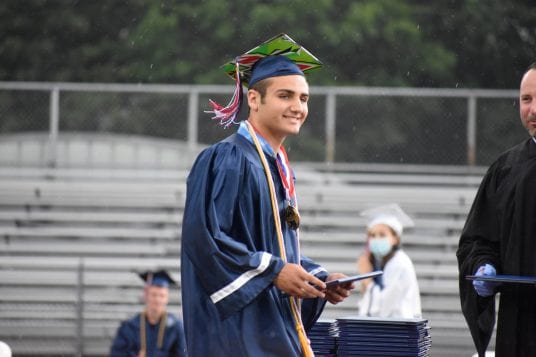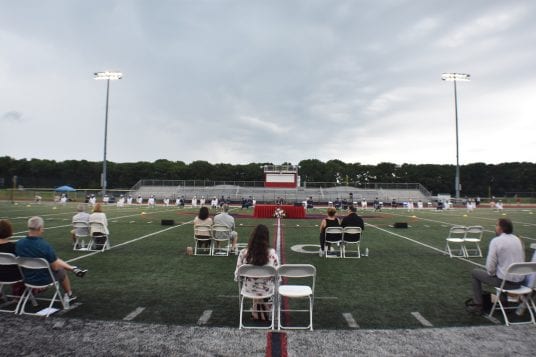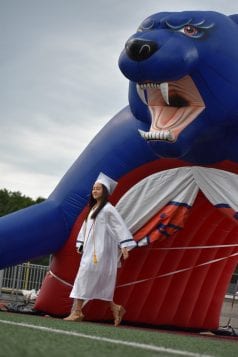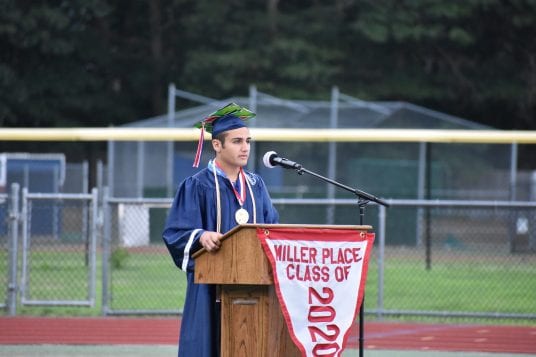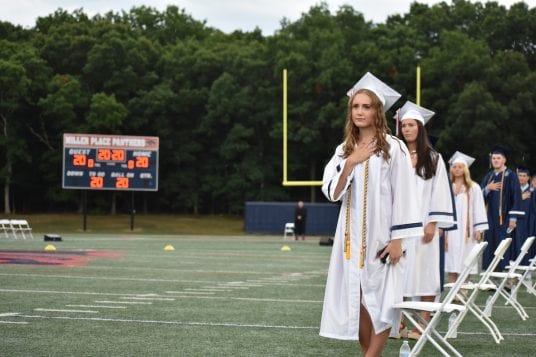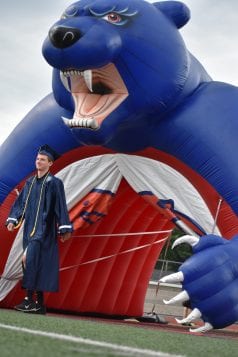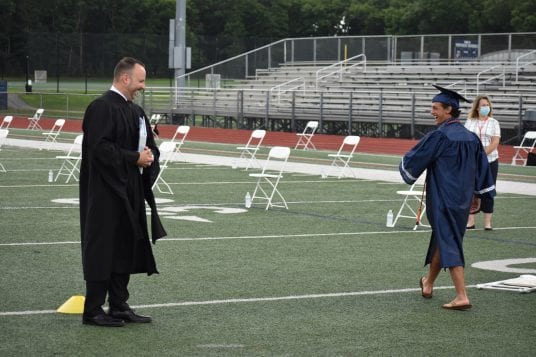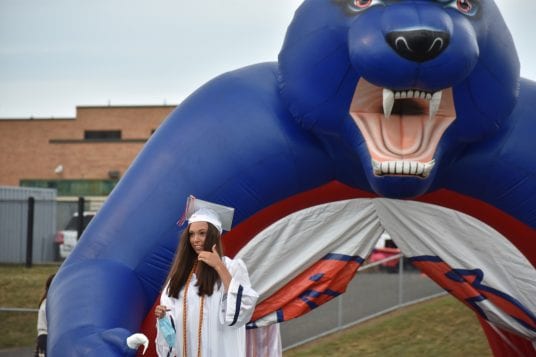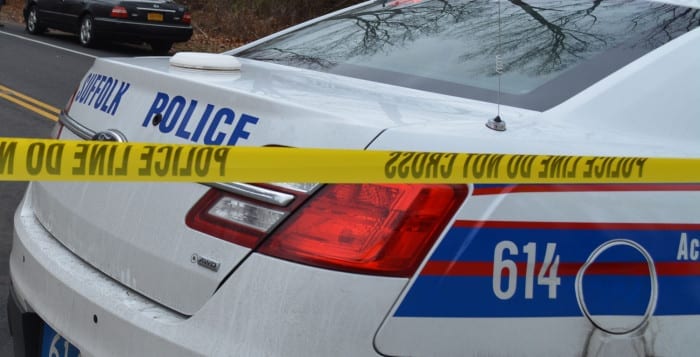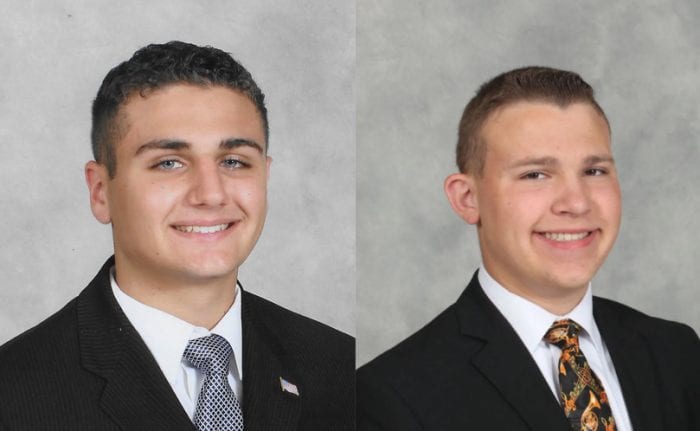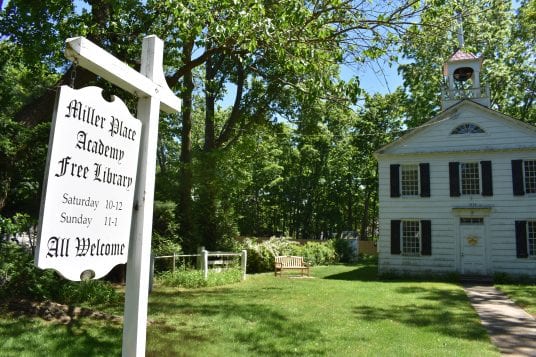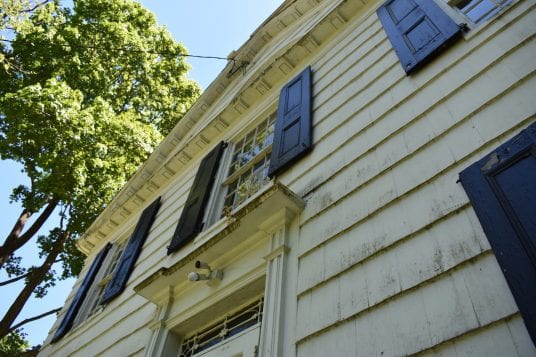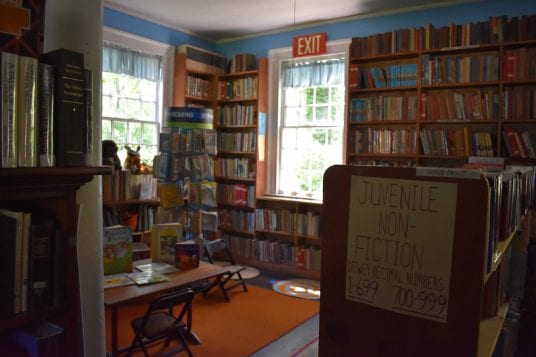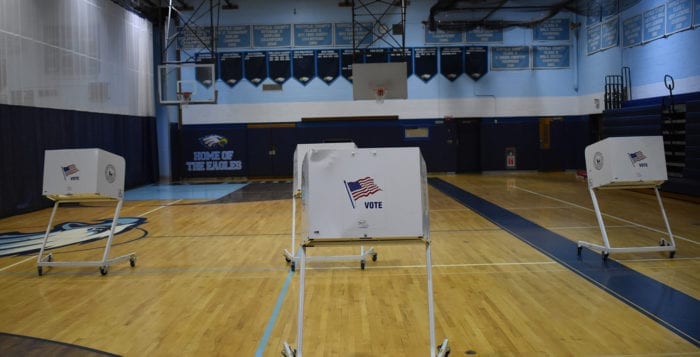The Town of Brookhaven has come close to finishing a single section of a much larger project along North Country Road.
This past weekend, Brookhaven finished paving and painting the lines along North Country Road in Miller Place from Honey Lane to the Miller Place Duck Pond, over to the entrance to the Laddie A. Decker School on Lower Rocky Point Road. The new resurfacing includes fixing the drainage along the side of the road and the installation of sidewalk and curbing. The new road and sidewalks pass in front of several area staples like the Town & Country Market, McNulty’s Ice Cream Parlor and the William Miller House.
According to the town Highway Department and Highway Superintendent Dan Losquadro (R), the North Country Road Highway project is actually a combination of three separate capital improvement projects.
The New York State Department of Transportation grant received by the Highway Department funded 60% of the “complete streets” portion of this project, which is the new paving in Miller Place. The contractor responsible for this section of the project should complete their work within the next few weeks. This part of the project came now in order to finish before schools reopened in September.
The second section of this project was the sidewalk and curb installation on North Country Road that was completed in 2019 from the entrance to the Laddie Decker School to Echo Avenue. The Highway Department resurfaced that section of North Country Road Aug. 6.
The final section of this project is North Country Road from Washington Avenue to Route 25A in Sound Beach. Highway crews are completing the preparation work on this stretch of road this week, with the milling and resurfacing of this section to be completed within the next few weeks.
The Brookhaven Highway Department has included in its 2021 budget request to install a significant amount of drainage infrastructure on North Country Road from Pipe Stave Hollow Road to Honey Lane to remove the water from the roadway. Once the drainage work is complete, that final section of roadway will be resurfaced.
This will complete the paving of North Country Road from the Village of Port Jefferson border to Route 25A at the Rocky Point/Miller Place border.
In July, the town announced the finalized resurfacing of Lower Rocky Point Road from Woodhull Landing Road to Rocky Point Landing Road, as well as Hagerman Landing Road. The town is also currently active milling 37 roadways all over Sound Beach. Once milling is complete at a near future date, weather permitting, all roads will be resurfaced.
Final details about the North Country Road project, including the total cost, grant funding and photos will be available when the project comes to completion in the next few months.


